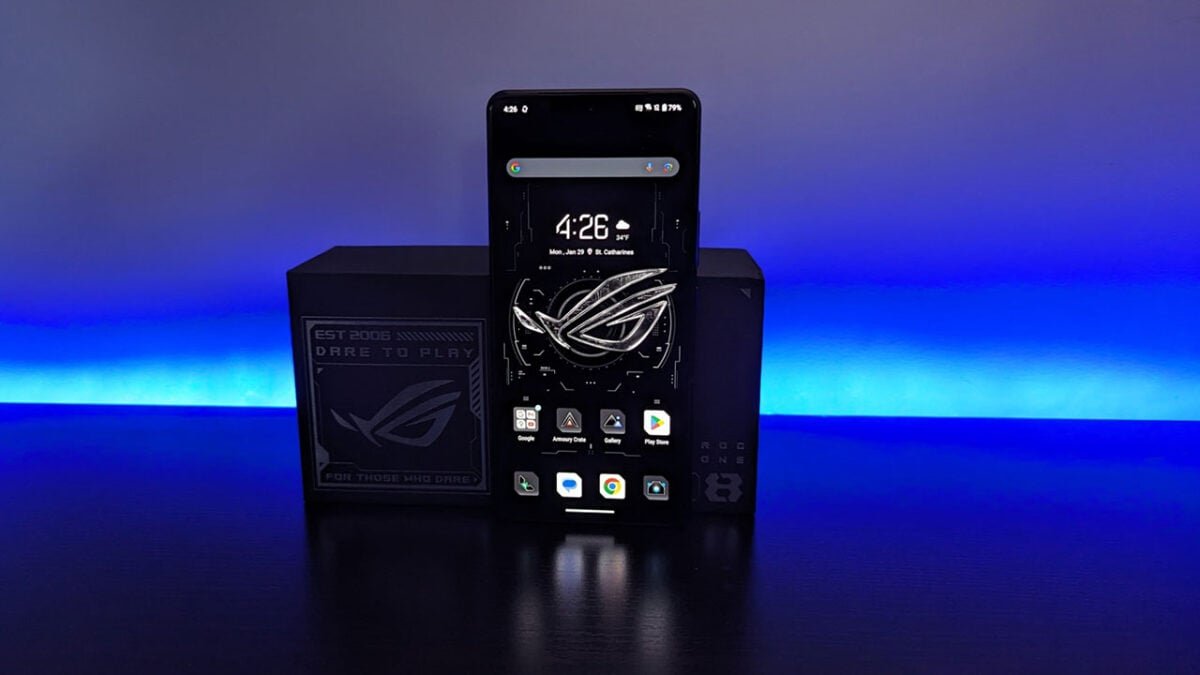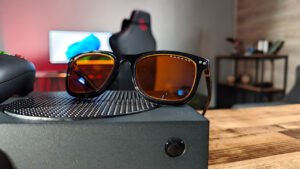The ROG Phone 8 from tech giant ASUS is the latest in their long-running Gaming Series Phone. Powered by a Qualcomm Snapdragon 8 Gen 3, 16 GB of LPDDR5X RAM, and housing 512 GB of storage, the ROG Phone 8 isn’t playing around. Offering a host of interesting and useful features such as dual AirTrigger controls, full vibration mapping for haptic feedback and some powerful software support, the ROG Phone 8 moves beyond the phone to a full-out mobile console.
From front to back, the ASUS ROG Phone 8’s design is an interesting blend of practical usefulness and sheer gaming awesomeness. Featuring the latest Corning Gorilla Glass Victus 2, the front screen features a beautiful 6.78” full HD+ (2400×180) SAMSUNG Flexible AMOLED screen rated for up to 2,500 nits peak brightness (1,600 nits average).
This 165Hz screen is powered by Samsung’s latest Active Matrix Organic Light Emitting Diodes(AMOLED) technology. AMOLED screens are designed to push the limits of colour reproduction and photo quality while using less power. Additionally, AMOLED is thinner than traditional OLED technology and easily achieves a faster refresh rate, making it ideal for gaming or consuming content on your mobile device.
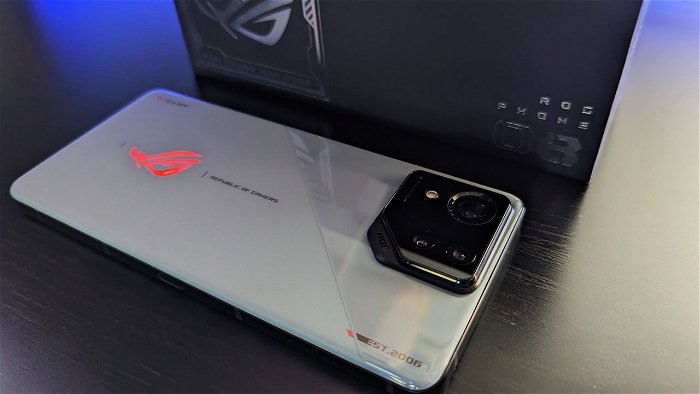
In practice, the ASUS ROG Phone 8 is an absolutely beautiful phone to use. Games and videos have exceptionally rich colour profiles, sharp image quality and superior brightness over many of the phones I’ve tested. Even when compared to the latest iPhone 15, the ROG Phone 8 easily stands out as the superior screen.
The ASUS ROG Phone 8 also leverages every ounce of screen space, with no visible front camera cutout in sight. On-screen fingerprint scanning and face detection make unlocking and using the Phone 8 quick and seamless. Spinning the phone around, there are a couple of design features to note. The first is the dual SIM tray that allows for two Nano SIM cards and full 5G support.
Continuing along the edge, the Phone 8 features two USB Type-C charging ports, a traditional bottom port, and a side port. The latter becomes especially handy when gaming in landscape mode. Gone are the days of a charging cable awkwardly resting in your hand while gaming. Finally, a 3.5mm audio port sits nestled in the phone’s bottom edge.
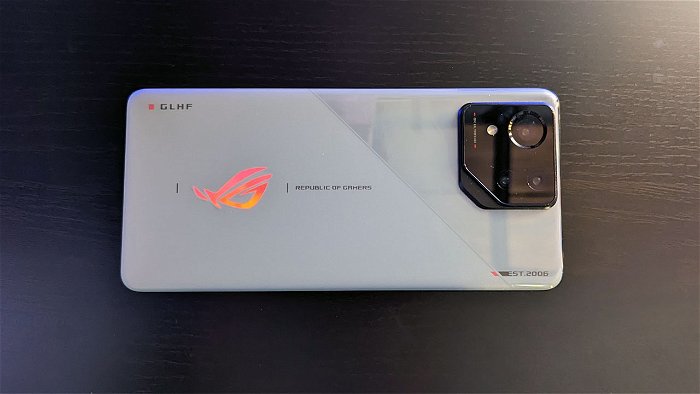
Speaking of gaming, the ROG Phone 8 also comes equipped with what ROG has dubbed AirTriggers. While there are no visible triggers in sight, the top edges (while in landscape mode) of the Phone 8 act as trigger buttons while gaming. These touch sensors support everything from button mapping to gyroscope aiming.
“The ROG Phone 8 also leverages every ounce of screen space, with no visible front camera cutout in sight.”
Functionally, the AirTriggers work, though they weren’t comfortable to use, at least in my hands. The way the phone sat in my hands made it a bit awkward to reach and press the trigger location. More times than not it was easier to use the default settings and skip using the triggers altogether. It’s a nice concept that could use some refining.
ROG has done an excellent job refining the design for the Phone 8. Measuring 163.8×76.8×8.9mm, and weighing 225g, the Phone 8 is smaller, thinner and lighter than previous generation ROG Phones. It fits quite nicely in my hand, and even with the aforementioned 6.78” display, one-hand navigation is comparable to my Pixel 6, which features a 6.4” display.
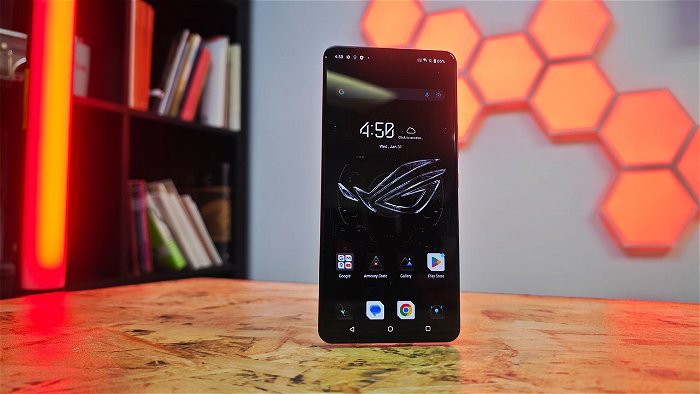
Moving to the rear panel of the Phone 8, you’ll be greeted with ROG’s signature Aura-supported RGB logo and textured backplane. The Camera bump, which houses a tri-camera system, sits nicely in the top left corner of the phone. Overall the ROG Phone 8’s design is a serious improvement over its predecessor.
Functionally, the ROG Phone 8 is a powerhouse. Featuring the Snapdragon 8 Gen 3 SM8650, the Qcta-core CPUs clock in at 3.3 GHz, which is more than enough to handle anything thrown its way. The 16 GB of LPDDR5X RAM also means that the Phone 8 has no problem handling multiple applications at once.
In fact, in testing, I found an interesting feature called background mode. This allows games that feature auto combat to run in the background while you are performing other tasks on your phone. It works exceptionally well and adds a whole new layer to the term multi-tasking without slowing down the user experience.
Gaming on the ROG Phone 8 is a treat. Everything runs exceptionally smooth, and thanks to Armoury Crate’s Dynamic mode (more on this later), when a game is fired up, the phone optimizes its settings to leverage every ounce of power for the game. The result is the smoothest gaming experience tested to date on any phone.
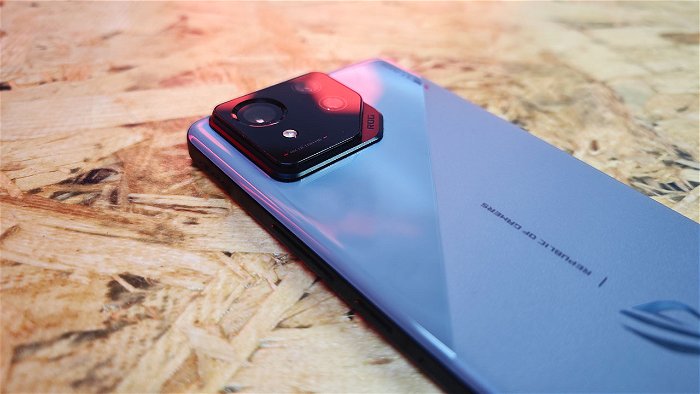
As for media consumption, everything looks amazing on the aforementioned AMOLED screen. Even running 4K videos is a smooth and painless experience. The onboard speakers are quite loud as well and offer a fairly clean audio profile, especially for onboard speakers. The ROG Phone 8 also features full Dirac Virtuo headphone support that allows for theatre-like audio quality, powered by your phone. For the audiophiles among us, the Phone 8 also supports full lossless streaming over Bluetooth, so you won’t miss a beat.
With full support for Bluetooth 5.3, USB-C and 3.5mm connections, you’ll have no problem connecting your favourite headphones. The ROG Phone 8 also supports built-in noise cancellation for phone calls, helping reduce background noise while on calls. It works quite well, making it much easier to have conversations in busy or noisy areas.
Regarding connection, The ROG Phone 8 also supports up to Wifi 6GHz, allowing for some serious download and streaming potential. Along with the aforementioned Bluetooth 5.3 and 5G network support, the Phone 8 boasts some of the fastest download speeds available. For those on networks where 5G isn’t an option or Wifi 6 isn’t available, the 8 has no issues swapping to whatever speeds are available.

The ROG Phone 8 offers a host of quality-of-life features as well. Face recognition and in-display fingerprint scanning are exceptionally responsive. This was most impressive in the latter as many in-display sensors tested in other phones struggled to respond on the first scan. The ROG, by contrast, is lightning-fast. This is a general theme for the ROG Phone 8’s performance. Across the board, it is an exceptionally quick phone. Every operation is smooth and seamlessly transitions to the next without hesitation.
Shifting now to photos and video, the ROG Phone 8 offers some powerful hardware. The rear camera consists of a tri-camera system. The main lens hosts a Sony IMX890 50 MP with an impressive 1/1.56” sensor, allowing for some impressive capture. This is further bolstered by an F1.9 aperture and a focal length that produces the same effect as a 35mm film camera. The result is a beautiful raw image that presents a very true-to-life colour.



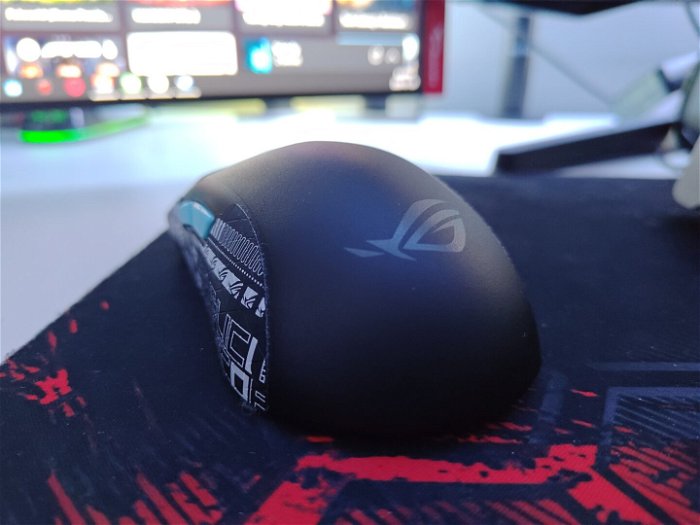
To accompany the Sony lens is a 13MP, 120° ultrawide lens. This helps pull in an impressive amount of real estate when large scene capture is needed. Finally, the third lens is a 32MP f/2.4 with 3X optical zoom. This allows for some fairly impressive push-in shots without the noise associated with digital zoom.
As for night photography, the ROG Phone 8 does a solid job of grabbing any light source to help boost the capture. It handled all the outdoor shots well in testing, creating some fairly clear night images. As for the front camera, the ROG Phone 8 comes with a 32MP lens that handles selfies and portrait shots well. Lighting and colour both come through sharp and balanced. Both rear and front cameras are quick and responsive with snappy and accurate autofocus.


As for camera features, ROG has a host of great camera modes and features to work with, allowing you to capture great light trail shots and panoramic shots. Thanks to the built-in AI Object Sense technology that divides images into sections to better optimize saturation, contrast and colour balance, photos look much more natural for those that like to kick it old school, though there are a host of menus and settings to all you to dial in manual shooting to help you capture the perfect shot.
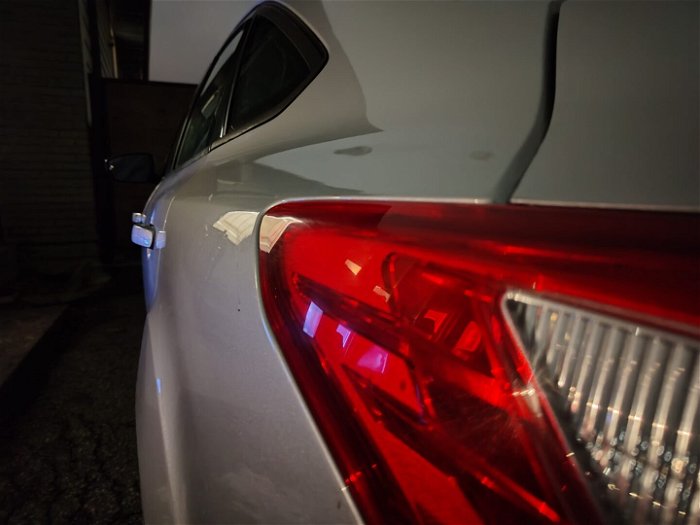



Video capture, likewise, is easy to use and offers some powerful capture options. While capable of capturing up to 8K 24FPS, the ROG Phone 8 works best at recording in a 4K 60PFS setting. At these settings, the video is smooth, sharp and rich in colour, easily adjusting to the lighting conditions on the fly. The built-in gimbal feature smooths out the experience even more, making it a great device for video capture.
Battery life on the ROG Phone 8 is solid as well. With a 5500mAh battery, the ROG had no problem keeping up with an average day of emailing, YouTube tutorials, and some gaming. Even after a 14-hour workday, I was still comfortably sitting above 40%. More impressive was the charge time, which, when using the included 65-watt HyperCharge USB charger, clocked in at just over 45 minutes from 0% to 100%. For those wondering, the ROG Phone 8 also supports 15-watt wireless charging, making it exceptionally flexible to suit your needs.
An interesting feature that has been implemented in the ROG Phone 8 is an overhauled cooling system called the GameCool 8. This redesigned cooling system is designed to create a 22% improved thermal experience for users. Essentially, it helps things stay cool while using the phone over long sessions of use.
“Gaming on the ROG Phone 8 is a treat, offering the smoothest gaming experience tested to date on any phone.”
In testing, while the phone did get a bit warm after a few hours of gaming, it was never uncomfortable to hold. When compared to a few other phones used in testing, it was noticeably cooler after extended gaming sessions. It’s an appreciated system, as I enjoy gaming on my mobile device, and it will become increasingly important as cloud gaming services continue to develop.
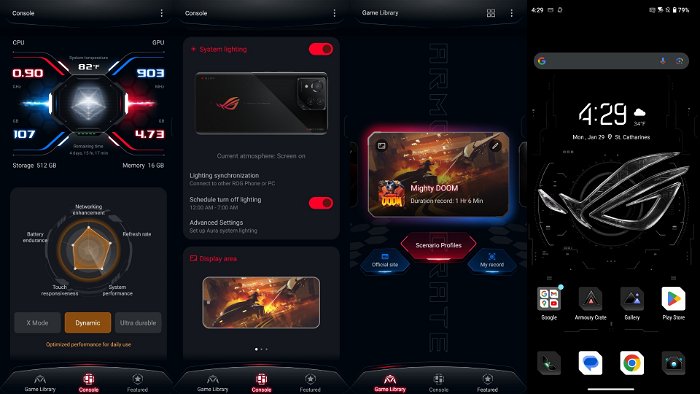
The last feature to note is ROGs Armoury Crate software. This in-house software suite is designed to allow for quick access to many of the system settings. Along with system monitoring, Armoury Crate also allows for control of different system profile modes designed to help optimize the phone for an individual’s situational use.
Ultra-durable mode allows for longevity at the cost of speed, while X Mode pushes hard on performance at the cost of battery life. Dynamic mode sits squarely in the middle, adjusting settings to allow for optimal daily use. Other features, such as system lighting and display area settings, can also be managed from here. Overall, it’s a solid piece of software that adds value to the user experience.
The ROG Phone 8 is an incredibly powerful piece of technology. Offering the best in hardware and powerful software, it can easily go toe to toe with anything on the market. While there are a couple of features that could use some refinement, namely the trigger sensors, the ROG Phone 8 is everything you could want in a mobile phone. If you need top-end performance, this is a worthy phone to consider.
